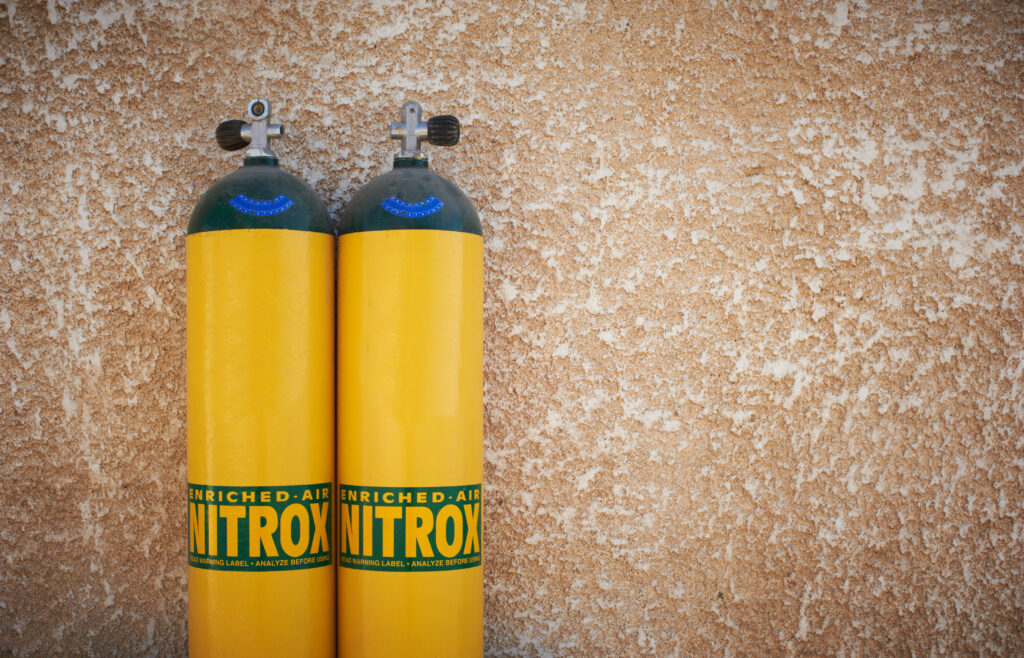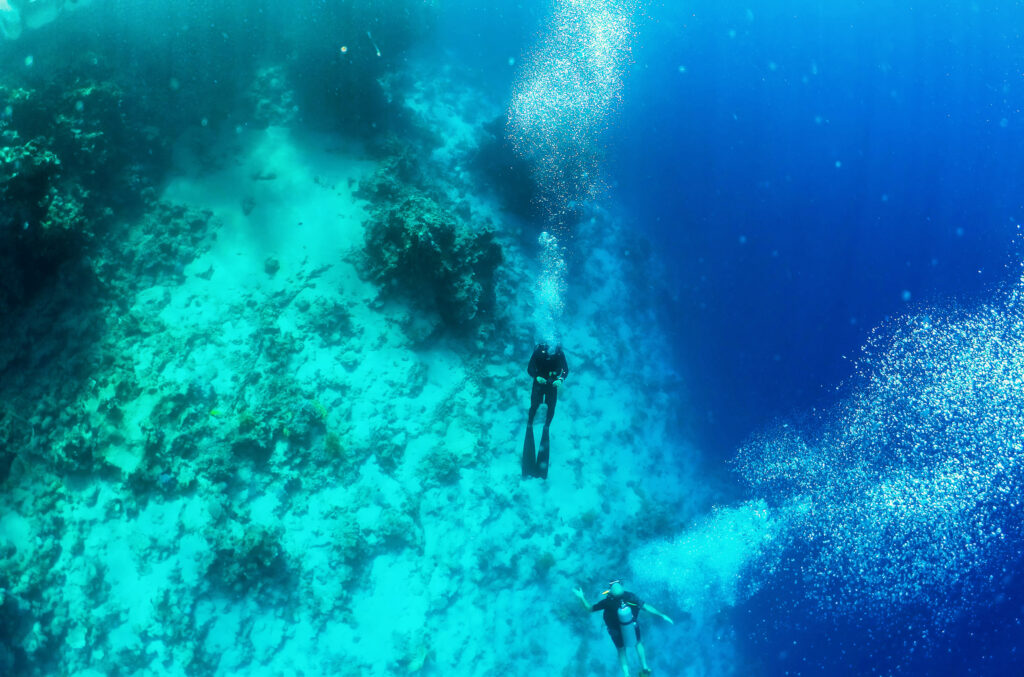What is Nitrox in Scuba Diving?

What is Nitrox in Scuba Diving? Nitrox, or Enriched Air Nitrox (EANx) or simply EAN, is a breathing gas mixture consisting of nitrogen and oxygen in which the proportion of nitrogen is less than the naturally occurring 78% found in atmospheric air. The primary benefit of using nitrox in scuba diving is reduced nitrogen absorption, […]
What is decompression in Scuba Diving?

Decompression is a critical aspect of scuba diving and refers to the process by which a diver transitions from a higher ambient pressure to a lower ambient pressure during their ascent to the surface. This process is essential for the safe elimination of dissolved inert gases, such as nitrogen, from the body’s tissues. Failure to properly decompress can result in decompression sickness (DCS), a potentially life-threatening condition. This entry will discuss the principles of decompression, the physiological implications, decompression procedures, and safety considerations for scuba divers.
What is Pressure?

Pressure is a fundamental concept in physics, defined as the force exerted per unit area. In the context of scuba diving, understanding pressure and its effects is crucial for safety and efficiency. Pressure plays a pivotal role in determining how divers experience the underwater environment, affecting everything from breathing to buoyancy. As divers descend into the water, the pressure increases, impacting both their equipment and bodies in significant ways. This article will discuss the principles of pressure, its effects on the human body, the health risks associated with changes in pressure, techniques for managing these changes, and the equipment designed to withstand them.
What is Rapture of the Deep?

Rapture of the Deep, commonly known as nitrogen narcosis, is a condition experienced by scuba divers at significant depths. This phenomenon, resulting from the increased partial pressure of nitrogen when diving, can lead to a range of symptoms that affect cognitive and motor functions. Understanding Rapture of the Deep is crucial for divers to ensure safe practices and avoid potentially hazardous situations underwater.
What is Vertigo?

Vertigo, a sensation of spinning or dizziness, can significantly impact one’s sense of balance and orientation. In the context of scuba diving, this condition becomes particularly relevant and potentially hazardous. Divers who experience vertigo underwater may struggle with maintaining their equilibrium, which can lead to disorientation and dangerous situations. This article delves into the causes, impacts, diagnosis, prevention, and management of vertigo specifically for scuba divers.
What is “Out of Air”?

In the context of scuba diving, “out of air” refers to a situation where a diver has depleted their air supply, presenting a critical emergency. This term underscores the paramount importance of air management for diver safety. Proper planning, vigilance, and awareness are essential to prevent such incidents, as running out of air underwater can lead to severe consequences, including drowning. Understanding the factors that contribute to air depletion and the measures to prevent and handle such emergencies is crucial for every diver.
What is No Fly / No Fly Time?

No Fly Time, also referred to as No Fly Zone or No Fly Period, is the recommended interval between the completion of a dive and boarding an airplane. It is an essential precautionary measure that helps prevent Decompression Sickness (DCS) and other altitude-related issues that may arise from flying too soon after scuba diving. The importance of observing No Fly Time stems from the physiological effects of pressure changes on the body, both during diving and air travel. Failure to allow sufficient time for these changes to normalize can lead to serious health complications.
What is a Low Pressure Inflator?

The Low Pressure Inflator (LPI) is a crucial component in scuba diving equipment, connecting a diver’s buoyancy control device (BCD) to their air supply. It allows divers to control their buoyancy underwater, making it an essential tool for maintaining stability and comfort during dives. By pressing the inflator button, divers can add air to their BCD, making them more buoyant, while the deflator button allows them to release air, decreasing buoyancy. This control over buoyancy is vital for safe and enjoyable diving experiences.
What is Partial Pressure?

Partial pressure is a fundamental concept in physics and chemistry, particularly significant in the context of scuba diving. It refers to the pressure exerted by a single type of gas in a mixture of gases. Understanding partial pressure is crucial for divers as it influences how gases are absorbed, transported, and expelled in the human body under varying underwater conditions. This concept helps in comprehending how different gases behave under increased pressures encountered at depth and is essential for ensuring safety and preventing diving-related illnesses.
What is a Diver Propulsion Vehicle?

A Diver Propulsion Vehicle (DPV), also known as an underwater scooter, is a motorized device used by scuba divers to increase their range underwater with minimal physical exertion. By holding onto the DPV, divers can be pulled through the water at various speeds, allowing them to cover greater distances and access dive sites that would otherwise be challenging to reach. DPVs are used in various types of diving, from recreational to technical and even military applications, providing significant benefits in terms of efficiency and safety.
